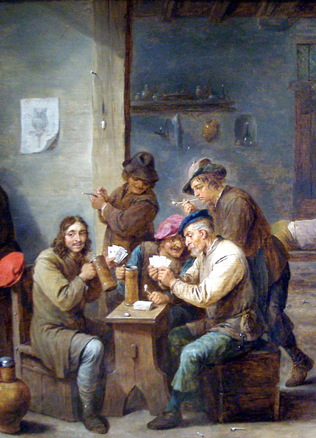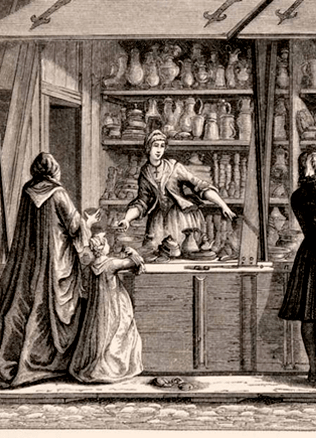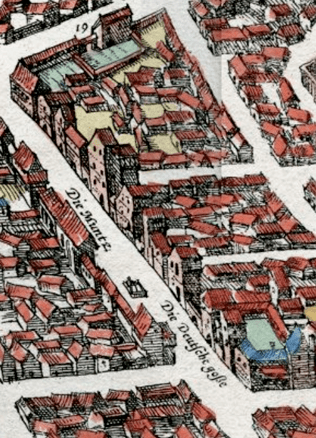The beginning of coin minting in the Grand Duchy of Lithuania: puzzles that remained unsolved for a long time
The first coins of the Grand Duchy of Lithuania were minted at the end of the 14th century. However, discussions about who and when started minting the coins of the Grand Duchy of Lithuania went on for more than 200 years. Disagreements were determined by the fact that there were no written sources left about the earliest minting of coins. The fact that the coins bore neither dates nor the names of the rulers who minted them also precluded the puzzle of coin minting to be solved. One could discern only various signs and symbols on the first coins – a rider, a double cross on a shield, pillars, and a spearhead with a cross. Some coins bore inscriptions or separate letters that meant nothing therefore it was quite often that the earliest coins of the Grand Duchy of Lithuania were called anonymous. However, this is not true. The finds of the new coins in recent years showed that all the coins clearly indicated the name of the ruler who minted them. The researchers did not have a sufficient number of coins for a long time and could not identify them exactly. As few as four types of the earliest coins of the Grand Duchy of Lithuania were known to science for one hundred and fifty years whose place of minting was Lithuania. Today we know about ten types of various coins, as well as an even greater number of types of the coins minted in partial dukedoms of the Grand Duchy of Lithuania. All this material that has appeared recently helped us to solve a lot of puzzles.
The treasure trove discovered helped a centuries-old argument
At the end of the 19th century there were speculations that the first coins of the Grand Duchy of Lithuania could have been minted in the years of Mindaugas’ or Gediminas’ reign. However, soon they were refuted, and the beginning of coin minting was moved to the end of the 14th century.
Soon a hundred-year long discussion started about which ruler began to mint coins.
At different time different authors mentioned Algirdas, Kęstutis, Władysław II Jagiełło, Skirgaila and Vytautas. Coin minting was attributed to Švitrigaila and Žygimantas Kęstutaitis. Opinions about the symbols represented on the coins differed too. Another unsolved puzzle was also important from a psychological point of view, namely, when the first coins appeared – before or after the Baptism of Lithuania (1387).
In 2002, a treasure trove dated the end of the 14th century was discovered in the territory of the Lower Castle.
It was the first time that coins of five types of the Grand Duchy of Lithuania have been found there. The treasure trove helped us to give answers to several questions. Both sides of one type of coins – a rider / a double cross in a shield – bore a clearly deciphered inscription in the Cyrillic alphabet, reading Duke Jagiełło. The treasure trove did not contain the type of coins with pillars / a spearhead with a cross, which some part of the authors tried to attribute to Kęstutis. The treasure trove proved that these coins were minted as far back as the 15th century. The treasure trove showed the coin minting sequence. It was established that the type of the coins – a spearhead with a cross / the inscription PEČAT, which part of the authors attributed to Algirdas, was minted not earlier than the coins of Jagiełło minted after the Baptism of Lithuania. Hence, the treasure trove discovered denied the idea that the coins of the Grand Duchy of Lithuania were started to be minted before the Baptism of Lithuania.
Christian symbols on the first coins
Investigations into the Palace of the Grand Dukes in Vilnius Lower Castle provided many other coins and new types of coins. All that helped the earliest coins of the Grand Duchy of Lithuania to be dated more exactly. Several puzzles, however, of the sequence of coin minting still remained.
Jagiełło was the first to have started minting coins of the Grand Duchy of Lithuania. That could have been around 1386 when Jagiełło became King of Poland, or in 1387 when Lithuania was baptised. The fact that the earliest coins of the Grand Duchy of Lithuania represented the symbols of Christianity leads us to this conclusion. The first coins bore a portrait of Virgin Mary surrounded with the legend MAGNA REGINA (Grand Queen), and a lion with a twist. Some coins bore a picture of an eagle and a lion around which there were legends that have not been deciphered yet. Somewhat later Jagiełło minted coins bearing a picture of a lion and a double cross in the shield. Then he minted coins bearing a picture of a rider (his own image) and a double cross in the shield. Jagiełło minted coins of this type for a long time, about 5 years. Around 1392, Jagiełło minted the last coins of the Grand Duchy of Lithuania, which can be called the first coins of Vytautas. These coins were minted for several weeks or months only, with a double cross in the shield and a spearhead with a cross.
If the double cross was Jagiełło’s personal sign, the spearhead with a cross was the first sign of Vytautas. In 1397 pillars became a personal sign of Vytautas.
Vytautas’ coins
Vytautas minted coins of another four types in Vilnius at different time. It is thought that around 1392 Vytautas minted coins with the inscription in the Cyrillic alphabet– Alexander on the averse and a lion whose tail was twisted on the reverse. Soon these coins were replaced by the type of coins bearing the inscription in the Cyrillic alphabet PEČAT (a coin) and a spearhead and a cross. Minting of this type of coins lasted for about 4–5 years. Around 1401 Vytautas minted a new type of coins for a short time, which bore a rider (the image of the ruler) and the pillars (Vytautas’ new coat-of-arms), represented by a double line. After the victory in the Battle of Grunwald, around 1411, Vytautas minted his last coins – pillars / a spearheads with a cross. There are no data telling us until what time these coins were minted, however, that might have continued till Vytautas’ death because the number of the latter coins of all the earliest minted coins of the Grand Duchy of Lithuania found is largest.
Do You Know?
Jagiełło was the first ruler of the Grand Duchy of Lithuania to have started minting coins. That could have been around 1386 when he became King of Poland, or in 1387 when Lithuania was baptised. The earliest coins of the Grand Duchy of Lithuania represented the symbols of Christianity.
It was Casimir Jagiellon who renewed coin minting after Vytautas’ death around 1450. These were the coins bearing a rider and the pillars inside of which the gothic letter K was represented. There are no exact data about the time of minting these coins. The coins were minted in partial dukedoms or lands too –Kiev, Navahrudak, Novgord-Seversk, Smolensk, Volhynia, perhaps in some others as well.
Eduardas Remecas



